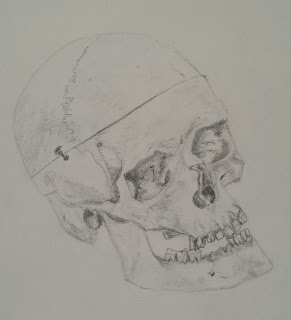Everyone's come across some article somewhere on-line that is thrilled to share how big human penises really are, for primates, and to explain why they evolved to be so big. It's not really the length, but the girth. Alan Dixson is your go-to on this. He's conservative in his assessment of the literature on penis size and even he concedes that human penis "circumference is unusual when compared to the penes of other hominoids (apes)" (p. 65 in Sexual Selection and the Origins of Human Mating Systems).
A favorite explanation for the big phallus is female mate choice, that females selectively make babies with males who have larger and, presumably, more pleasurable semen delivery devices. This is backed up by studies. When life size projections of naked men are shown to female subjects, they say they find the ones with bigger ones to be more attractive. [This is exactly how mate choice works where I live, how about you?]
Other explanations include male competition. If you can deliver your package to the front yard but the other guy can deliver to the front door, his is more likely to be carried inside the house first. Or, if he can steal away what you just delivered, then, again, his package has yours beat. Thanks to his big penis he's more likely to pass on his winning penis genes than you are to pass on your loser penis genes. Loser.
All this is just terribly fun to write about and I'm not even going nuts (gah) like they do. And they do. They really do. And all over the Internet they do: "Evolution of human penis" gets 53,000 hits just on scholar.google alone, and about 832,000 on Google.
But doesn't it make sense that for a penis to be somewhat useful it has to be somewhat correlated to vagina size?
I'm talking about all penises in the universe and all vaginas too. Sure there's variation, but a penis can't be too wide. It helps to be long, probably, but it can't be too long.
So neither pleasure nor psychology need matter at all, just function associated with some sort of fit. Pleasure and psychology are never invoked to explain penis morphology in other animals. If anything, it's the cornucopia of horrifying, not pleasing, animal penises that begs for evolutionary explanations.
Wouldn't you explain the size and shape of the key by the size and shape of the lock? So wouldn't it be a little more scientifically sound to hypothesize that the human penis is sized and shaped like that because it fits well into the human vagina?
Sure, it gets chicken-and-eggy or turtles-all-the-way-downy, but c'mon. Isn't it a bit obvious that the privates that fit inside the other privates are probably correlated? You'd think that even the people who have never had intercourse would default to this explanation for the evolution of the human penis.
Figure 2. Examples of genital covariation in waterfowl.
(A) Harlequin duck (Histrionicus histrionicus) and (B) African goose (Anser cygnoides), two species with a short phallus and no forced copulations, in which females have simple vaginas as in Fig 1a. (C) Long-tailed duck (Clangula hyemalis), and (D) MallardAnas platyrhynchos two species with a long phallus and high levels of forced copulations, in which females have very elaborate vaginas (size bars = 2 cm). ] = Phallus, * = Testis, ★ = Muscular base of the male phallus, ▹ = upper and lower limits of the vagina.
doi:10.1371/journal.pone.0000418.g002
|
But we're rarely, if ever, told that human penises are relatively girthy because human vaginas are. It's always about male competition or female preference.
Sure, we may be a little weird compared to our close relatives for not having a baculum (penis bone), and maybe that's the sort of thing you want to explain for whatever reason, but does human penis size and shape need a uniquely human story?
Assuming it's correlated to the vagina like it probably is in many other species,* then no it doesn't... unless the size and shape of the human vagina has an exceptional story.
Does it? We wouldn't know. There are zero (look!) articles titled "Why is the human vagina so big?"
Until right now.
Here we go. If we were going to answer it the same way we've long explained the human penis, and other animal penis shapes, then we've got a few ideas...
Because walking upright made the vagina conspicuous and males thought a bigger vagina was better. Because big vaginas outcompete small ones at catching sperm. Because of male pleasure from coitus with a big vagina. Because of heat dissipation or thermoregulation. Because of a tradeoff with brain size.
And of course, we'd need to demonstrate that the human vagina is in fact larger, relative to body size, than the vaginas of other primates. Regardless, a sound answer to the question of vagina size and shape focuses on childbirth, wouldn't you say? She's got to be big enough to push out a baby and, for humans, it's a great big baby.
So if there's an exceptionally human story for the great big human penis, that exceptional story originates not in a woman's orgasms, not in her pornographic thoughts or her lustful eyes, but in her decidedly unsexy "birth canal."
And I dug up a nice little note to explain this to us all written by Dr. Bowman, a gynecologist, back in 2008 for the Archives of Sexual Behavior
That note is magnificent. It starts out giving the only vagina-size-based, not to mention childbirth-based, explanation for human penises that I can find in the literature (which is thankfully cited by Dixson in his book mentioned above). But it still manages to bring the explanation beyond the vagina and onto another proud triumph: "In sum, man’s larger penis is a consequence of his larger brain."
After you clean up the coffee you just spat onto your computer screen, you can read it all for yourself up there in the figure.
Guess who didn't read it? That study in PNAS, mentioned above, that showed women naked penises, got a high attractive score for the big ones, and thinks that's evidence for mate choice now, today, let alone back when (I'm going to speculate that) women had a tiny bit less of it.
Point is, the literature rages on with the special explanations for the big penis with nary a big vagina in sight.
But you heard it here, at least.
Childbirth is why the human vagina is so big and, consequently, why the male penis is so big. It's pretty straightforward. Yet we're still left scratching our heads as to why the penis question endures.
Is evolutionary science averse to big vaginas?
Does nobody love a big vagina?
Because that's just ridiculous. Everybody came from one.
*Unfortunately a few scholar.google searches led me to find no cross-species comparisons of mammalian vagina lengths or any vaginal measures. It may be out there, but I haven' t found it. I found some measures for bitches... DOGS! And some heifers... COWS! So I've got to compile some data if I'm to do this properly. Baby size might be a way to do this.
**UPDATE. p. 73 in Dixson has Figure 4.3 with nine primate species' penile and vaginal lengths plotted. Thanks Patrick C for reminding me where I'd seen something like this and where to point readers!








